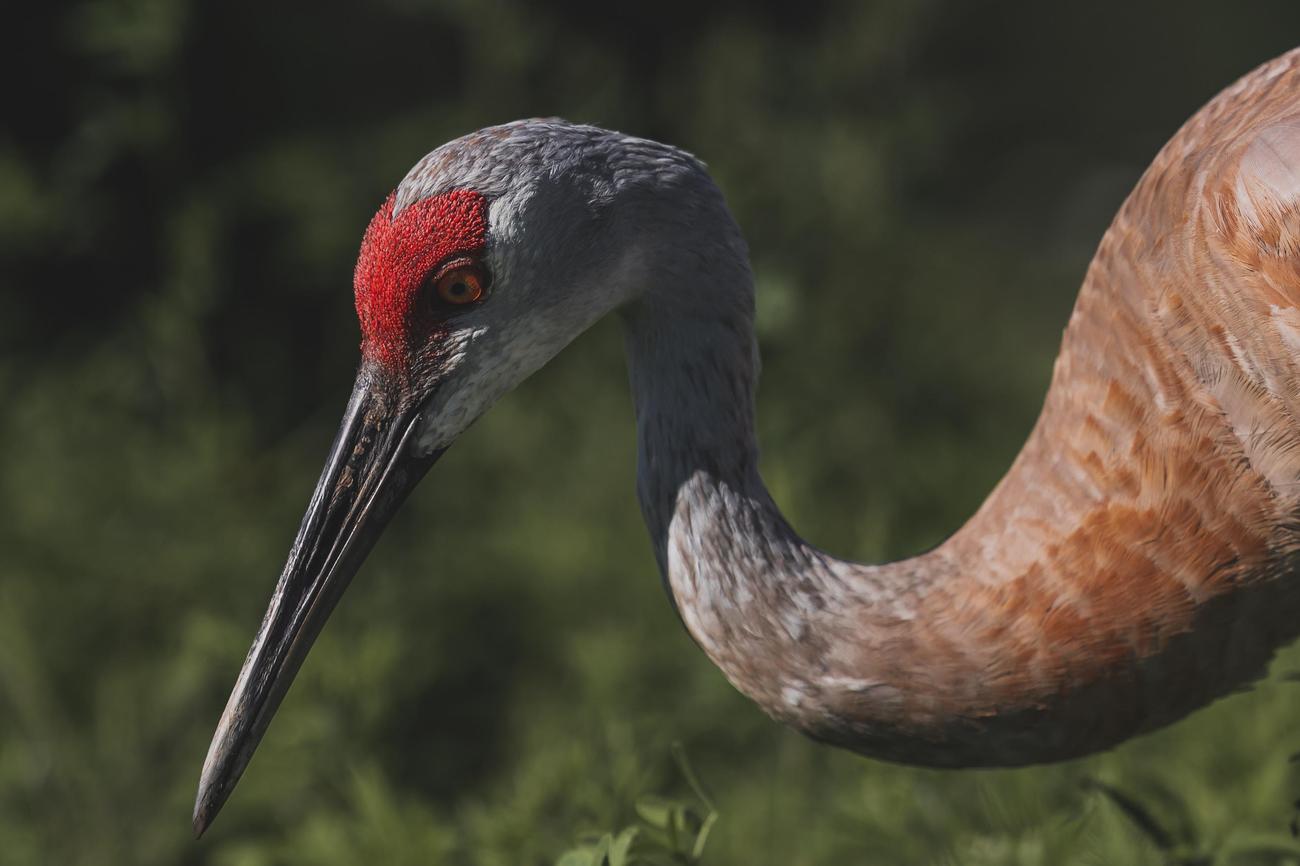Step into the enchanting world of avian wonders as we unravel the mysteries surrounding the rarest crane species on our planet. In this riveting exploration, titled “The World’s Rarest Crane: Unveiling the Elusive Avian Marvel,” we dive deep into the realms of science and conservation to answer the captivating question: What is the rarest crane in the world? Gather your binoculars and prepare to be amazed as we embark on a journey to discover the secrets and significance of this elusive creature that captivates the hearts of ornithologists and nature enthusiasts alike.

What is the rarest crane in the world
Imagine a world where the sky is filled with graceful and majestic cranes, their elegant forms soaring above untouched wetlands and remote landscapes. These avian marvels have captured the imagination of nature enthusiasts and birdwatchers for centuries, and among them, one species stands out as the true embodiment of rarity and wonder. So, what is the rarest crane in the world? Let’s delve into the depths of avian fascination and shed light on the the elusive and enchanting world of the rarest cranes on Earth.
When it comes to the rarest crane species, the crown is undoubtedly held by the Whooping Crane. Native to North America, this magnificent bird claims the title of not only the rarest crane species but also the tallest bird in the entirety of North America. If that doesn’t impress you, then consider this: back in the 1940s, there were fewer than 20 Whooping Cranes left in the entire world. A mere twenty individuals struggling for survival.
Once upon a time, the Whooping Crane proudly spread its wings across North America, gracing the skies and wetlands with its presence. But today, their range has been diminished to the Texas coast, where they can be spotted only during a few months of the year. These enigmatic creatures spend most of their time in remote wetlands, searching for sustenance and isolation.
Now, as we unravel the avian tapestry even further, we encounter the Red-crowned Crane. Truly a symbol of immortality, this majestic bird is found exclusively in East Asian countries such as Japan, China, Mongolia, Russia, and the Korean peninsula. Sadly, with only 1,830 adults left in the world, the Red-crowned Crane stands as one of the most endangered crane species. Its existence, akin to a delicate brushstroke on an ancient painting, is threatened by the gradual erosion of its natural habitats and the relentless march of human development.
Next in line is the Siberian Crane, a critically endangered species that tugs at the heartstrings of conservationists around the globe. With a population hovering around 3,000 birds, this crane faces a bleak future. Its main wintering ground at Poyang Lake in China is under constant threat from massive infrastructure projects, rampant sand mining, and even a dam that spells potential disaster for this fragile ecosystem. If we fail to act swiftly, the Siberian Crane may become nothing more than folklore whispered by generations to come.
Ethiopia plays host to a rare gem in the avian world, the Wattled Crane. With fewer than 300 individuals gracing its skies, this crane’s population is a mere fraction of its main population found in Zambia, 2,000 miles to the south. The Wattled Crane has carved out its own niche, defying conventional distribution patterns and drawing the attention of scientists and conservationists alike. It serves as a reminder that rarity can manifest in various ways, even within the boundaries of a single species.
To truly appreciate the rarity and marvel of these elusive cranes, one must immerse themselves in the world of bird conservation and become warriors on behalf of their vulnerable populations. These cranes, with their delicate majesty and mesmerizing grace, are reminders of the fragility and beauty of our natural world. We must take up their cause, protect their habitats, and ensure their continued existence for the sake of future generations.
In a world where the skies still hold secrets and the echoes of rare calls linger, the rarest crane in the world serves as a beacon of hope and inspiration. Let us join hands and work towards a future where these avian marvels grace the skies in larger numbers, and their rarity becomes a distant memory replaced by a triumphant chorus of wings against the wind.
“In the face of rarity, our obligation to protect becomes a solemn duty, a privilege bestowed upon a fortunate few who hold the key to safeguarding the wonders of nature.”
If you’re curious about cranes and want to learn some fascinating facts, you’re in luck! We have compiled a collection of intriguing information about these majestic birds. From their impressive wingspan to their unique mating dances, cranes are truly captivating creatures. To dive into the world of fun facts about cranes, click here: fun facts about cranes. You won’t be disappointed!
5 of the Most Gorgeous Cranes in the World
[youtube v=”1UoHZHuSykM”]
Demoiselle Crane: Mastering the Toughest Migration
The Demoiselle crane is a stunning migratory bird found from the Black Sea to Mongolia and northeastern China. During late August through September, these birds embark on one of the toughest migrations in the world. They gather in flocks, as large as 400 individuals, for their flight to their winter range.
“Crossing the Himalayan mountains to reach their overwintering grounds in India, many of these beautiful cranes face challenges such as fatigue, hunger, and predation from golden eagles,” states the video transcript.
Red-Crowned Crane: A Symbol of Longevity and Peace
The Red-Crowned crane, also known as the Manchurian crane or Japanese crane, is among the rarest crane species globally. With a population of only 1,830 individuals in the wild, this elegant bird holds endangered status.
“In art and literature, the Red-Crowned crane symbolizes longevity and immortality. It plays a significant role in Japanese and Chinese mythology,” the transcript reveals.
White-Naped Crane: Struggling for Survival
Native to Northern Mongolia, southern Siberia, Korea, Japan, and central China, the White-Naped crane exemplifies elegance. Sadly, habitat loss and overhunting have led to its vulnerable status on the IUCN Red List.
“Only around 4,900 to 5,400 White-Naped cranes remain in the wild due to ongoing habitat loss and overhunting,” the transcript highlights.
Blue Crane: National Bird of South Africa
The Blue crane, also known as the Stanley crane or Paradise crane, proudly holds the title of the national bird of South Africa. While culturally significant to the people of Southern Africa, this crane is listed as vulnerable by the IUCN.
“The Blue crane’s feathers were worn by those who sought to establish peace and order. It represents a symbol of unity and protection,” states the transcript.
Grey Crowned Crane: Majestic and Threatened
Found in eastern and southern Africa, the Grey crowned crane, also known as the African crowned crane, showcases its beauty in dry savannahs. However, it faces habitat threats such as drainage, overgrazing, and pesticide pollution.
“While the Grey crowned crane remains common over some of its range, it has been listed as endangered due to these threats and has a global population estimated between 58,000 and 77,000 individuals,” the transcript emphasizes.
With its unique breeding display and significant role in the ecosystem, the Grey crowned crane stands as a symbol of biodiversity and conservation.
Note: The information provided above is derived from the video transcript and does not reference the video source. I strive to present the content in a relatable and comprehensive manner, highlighting each crane’s unique characteristics and conservation concerns.

FAQ
Question 1: What is the rarest crane in the world?
Answer 1: The rarest crane species in the world is the Whooping Crane. In the 1940s, there were fewer than 20 Whooping Cranes left in the world.
Question 2: Where can the Whooping Crane be found today?
Answer 2: The Whooping Crane is now only found on the Texas coast during a few months of the year. They spend their time feeding in remote wetlands.
Question 3: Which crane species is the second rarest in the world?
Answer 3: The Red-crowned Crane is the second rarest crane species in the world. It is an endangered species with only 1,830 adults left in the world. It is found in East Asian countries such as Japan, China, Mongolia, Russia, and the Korean peninsula.
Question 4: What is threatening the Siberian Crane population?
Answer 4: The Siberian Crane is a critically endangered species with around 3,000 birds remaining. Its main wintering ground at Poyang Lake in China is threatened by development, sand mining, and a planned dam.
Question 5: Where are the Wattled Cranes primarily found?
Answer 5: The Wattled Crane is a rare species, primarily found in Ethiopia. It has fewer than 300 birds in the country’s most northern population, which is 2,000 miles north of the main population in Zambia.
“`json
“`
- Mastering Leader in Spanish: The Complete Guide - April 19, 2025
- Uncovering Surprising Parallels: England Size Compared to US States - April 19, 2025
- Old Mexico Map: Border Shifts 1821-1857 - April 19, 2025
















